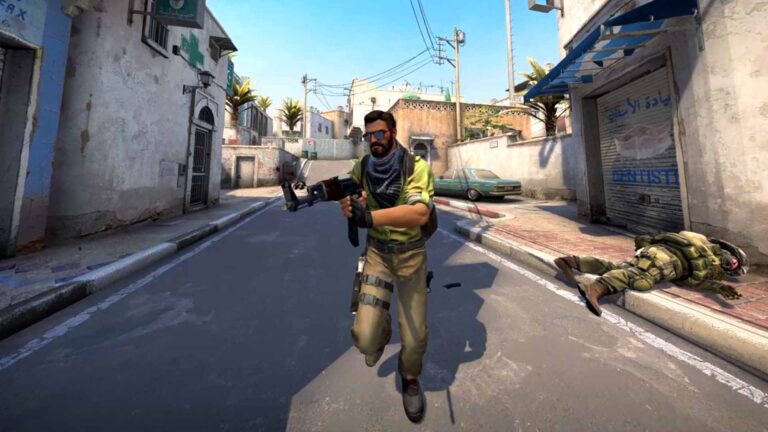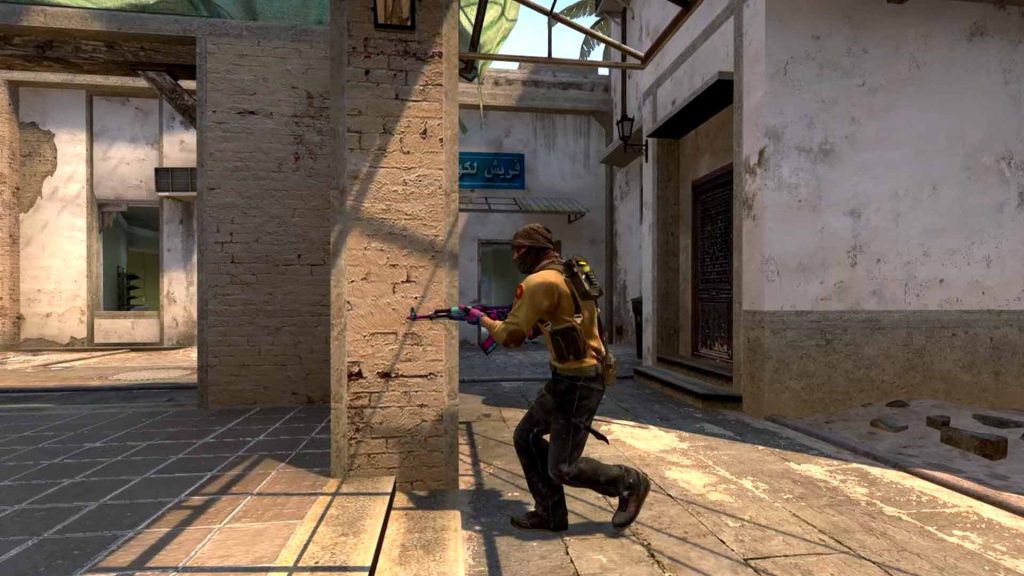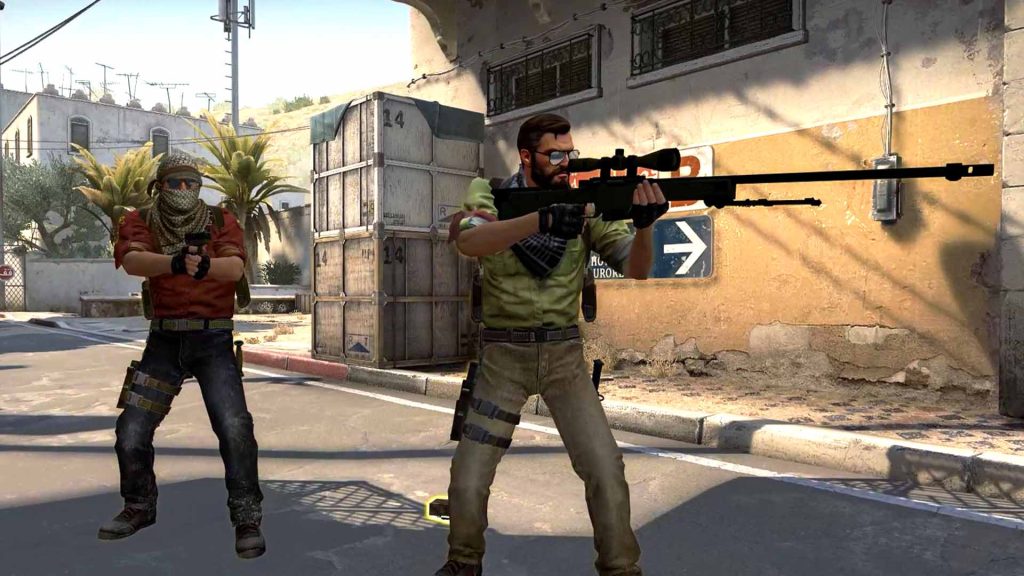
In competitive Counter-Strike, understanding different tactics is key to adapting to the enemy’s playstyle. This article will cover the most common types of strategies used in Counter-Strike. Mastering these tactics is crucial for improving game sense and decision-making. By learning approaches like aggressive rushes and fakes, you’ll be ready for various situations and boost your chances of winning.
Most tactics rely heavily on strong teamwork, precise timing, and clear communication to succeed.
Quick Rush Tactics
Rushes aim to catch opponents off guard with a fast, coordinated attack. For a successful rush, your team must move together to overwhelm a specific area or bomb site. Quick grenades can disrupt the enemy, allowing you to take advantage of the chaos. However, rushes can fail if the enemy anticipates them or counters with well-placed utility.
Fakes and Misdirection Tactics
Fakes revolve around deception and mind games. By tricking the enemy into rotating, your team can exploit their weakened defenses. To execute a convincing fake, simulate an attack in one part of the map to divert attention from the real target. This can be done with fake smokes, misleading sounds (like footsteps or jumps), or even sacrificing a teammate to sell the illusion. Timing is critical—don’t push the real bomb site until the fake has done its job.

Slow and Tactical Plays
Instead of rushing a bomb site, your team can choose to take a more slow and calculated approach, focusing on map control and careful engagements. You’ll want to use utility to clear angles and deny vision, while gathering information on enemy positions. With strong communication and teamwork, you and your teammates can trade each other and make well-informed decisions about when and where to strike.
Eco and Force-Buys
When your team’s economy is struggling, it’s time to get creative with eco and force-buy tactics. The goal here is to make the most out of budget weapons like pistols and SMGs to build up the economy. The good thing about eco and force buys is that they allow for some unexpected moves that surprise the enemy, such as staying in random off-angles, taking unconventional routes, making surprise attacks, and using clever utility.
Eco Round Strategies
Eco rounds (short for “economy rounds”) occur when your team has limited funds, forcing you to save money for future buys. The goal is to spend as little as possible while still maintaining some threat against the enemy. Smart eco-round purchases can sometimes lead to unexpected wins through smart positioning, teamwork, and enemy mistakes.
Key Purchases for Eco Rounds:
- Pistols + Utility – Stick with your default pistol (or upgrade to a P250, CZ75-Auto, or Deagle if affordable) and prioritize smokes, flashes, or a single frag grenade to support team plays.
- Armor (Optional) – If you have extra cash, light armor (no helmet) can help survive pistol shots, but avoid overspending.
- Zeus (Taser) / Utility Play – In some cases, a well-placed Zeus or defensive utility (like a molotov) can catch enemies off guard.
Eco Round Playstyle:
- Avoid Unnecessary Fights – Play defensively, hold tight angles, and only take engagements where you have the advantage.
- Focus on Picks & Rotations – Look for isolated enemies or lurk for a weapon steal to turn the tide.
- Force Enemy Waste – Bait out utility (grenades, AWP shots) to weaken their economy for future rounds.
When to Force Buy:
If your team is close to a full buy next round, a partial force buy (e.g., SMGs, shotguns, or Deagles with utility) can sometimes catch the enemy off guard. However, avoid full eco if the next round is critical (e.g., match point).
Default Setups
In a default setup, players spread out to key positions across the map to establish control and gather intel. This methodical approach helps your team identify gaps in the enemy’s defense while minimizing unnecessary risks. By holding map control and watching for rotations, your team can gather crucial information on enemy movements, utility usage, and potential weak points.
As the round progresses, you can adapt based on the intel collected—whether it’s spotting an undefended bomb site, catching an isolated opponent, or recognizing an overly aggressive push. The flexibility of default play allows your team to transition smoothly into an execute, a late rush, or even a well-timed fake, depending on the enemy’s tendencies. Strong communication and patience are vital, as rushing decisions without proper information can lead to costly mistakes.
Key Benefits of Defaults:
- Map Control – Secures important areas, limiting enemy movement.
- Information Gathering – Reveals enemy setups and rotations.
- Adaptability – Allows for flexible mid-round decisions.
- Risk Management – Avoids reckless plays while pressuring opponents.

Split-Push Tactics
Split-push tactics are about putting the enemy under pressure from multiple directions. Split your team into smaller groups, and hit one of the bomb sites from different angles at the same time. This powerful approach can create openings in the enemy’s defence, giving your team the advantage it needs to take over the site.
Aggressive Defence Tactics
As Counter-Terrorists, sometimes it’s best to push forward on the map to take an early fight with the enemy. By pushing into their territory, you can likely find an opening if the enemy team doesn’t expect you to push. This bold tactic is great for surprising the enemy and securing crucial map control, but be aware if the enemy anticipates your aggression.
Retake tactics
When you need to regain control of a bomb site, retake tactics are your go-to. Work together to methodically clear angles and neutralize the enemy to make room for a successful defuse. To pull off an effective retake, you’ll need strong teamwork, utility skills, and a keen understanding of your enemies’ post-plant positions.
Conclusion
Mastering tactics, economy management, and adaptability is key to success in competitive Counter-Strike. Whether executing a well-timed rush, setting up a deceptive fake, or making smart decisions during an eco round, every choice impacts the match.
- Teamwork & Communication – No tactic works without coordination.
- Information & Adaptation – Adjust strategies based on enemy tendencies.
- Economy Awareness – Knowing when to save, force, or full buy keeps your team competitive.
By refining these skills, you’ll improve your game sense, decision-making, and overall performance—giving your team the edge in clutch moments. Keep practicing, stay flexible, and outplay your opponents!




Leave a Reply